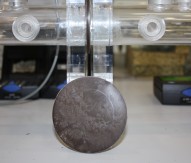
ERC study funds analysis of cave paintings
Researchers in Spain have found that carbonised plant material has been used in historical cave paintings in Valencia for the first time.
The study, which received finding from the European Research Council and FP7’s Marie Skłodowska-Curie Actions, saw academics from the University of Valencia and France’s National Centre for Scientific Research discover new properties of the black pigments located in the shelters of the Remígia cave in the Valltorta-Gassulla area, between the Valencian regions of L’Alt Maestrat and La Plana (Castelló). The use of black pigments are less common to those in red, but use is not limited to temporal sequences or to particular geographical areas.
Speaking about the study, the University of Valencia’s Clodoaldo Roldán commented: “Up to now, these pigments were associated with the use of mineral components such as manganese oxides, but this study has made it possible, for the first time, to identify the use of carbonised plant material to produce the black pigments used in the Levantine paintings at Valltorta-Gassulla”.
The black pigments are considered to be widely used in the history of humanity due to their ease in preparation, most notably from charcoal (vegetable carbon) or graphite (mineral carbon). The analysis was undertaken using the energy dispersive X-ray fluorescence (EDXRF), a non-destructive analysis made on site in order to preserve the integrity of the paintings, and electron microscopy, a laboratory analysis of microsamples from a limited set of black figures. Drawings analysed include 15 human figures, six animals, one animal track and three undefined motifs.
The details of the paper are published in the Journal of Archaeological Science,






